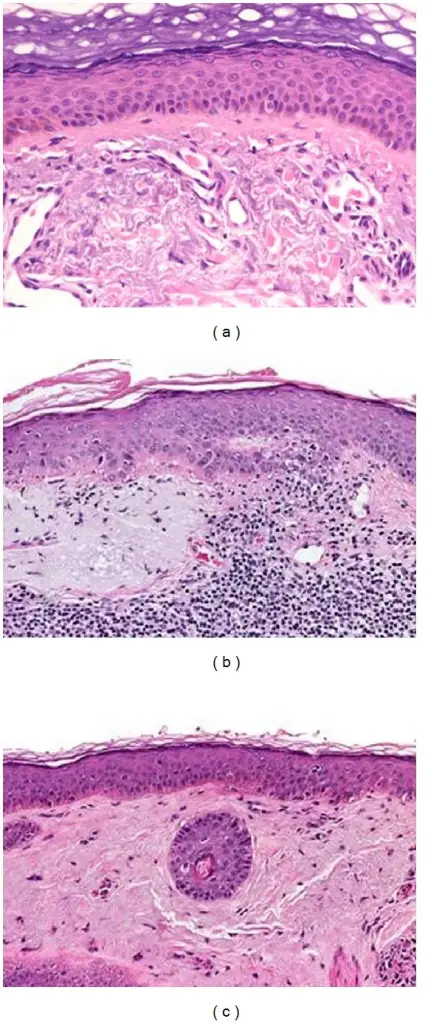Actinic keratosis is a UV light-induced anomaly of the skin capable of progressing to invasive squamous cell carcinoma.
What is the Pathology of Actinic Keratosis?
The pathology of actinic keratosis is:
-Etiology: The cause of actinic keratosis is chronic exposure to sunlight.
-Genes involved: TP53 gene.
-Pathogenesis: The sequence of events that lead to actinic keratosis relates to collective UV exposure. Consequently, the incidence of actinic keratosis surges with each decade of life.
-Morphology: The morphology associated with actinic keratosis shows < 1 cm in diameter, tan-brown, red, or skin-colored, a rough, sandpaper-like consistency.
-Histology: The histology associated with actinic keratosis shows atypia epidermis, hyperplasia of basal cells, dyskeratosis with pink cytoplasm.
How does Actinic Keratosis Present?
Patients with actinic keratosis are typically common in males than females present at an age range of 20 to 30 years. The symptoms, features, and clinical findings associated with actinic keratosis include red and scaly rough spots.
How is Actinic Keratosis Diagnosed?
Actinic keratosis is diagnosed through a skin biopsy, corfim diagnosis and used to rule out squamous cell carcinoma. Fluorescence, with a photosensitizing drug.
How is Actinic Keratosis Treated?
Actinic keratosis is treated through medical therapy such as imiquimod cream.
What is the Prognosis of Actinic Keratosis?
The prognosis of actinic keratosis is good. With proper treatment, it can be successfully managed.



